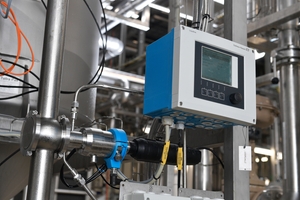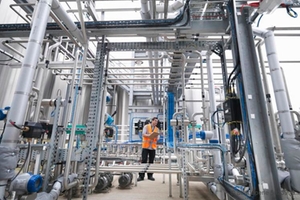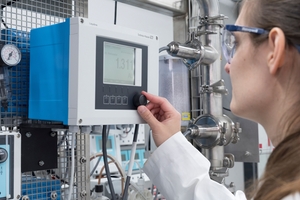Food & Beverages
Eat Right Initiative: Making Healthy Eating Accessible for Everyone
With the goal of promoting food that is secure, wholesome, and sustainable on college campuses, the Food Safety Standards Authority of India has started a project called “Eat Right Campus.” To comply with Eat Right Campus’s audit requirements, representatives, including staff and food handlers, attended Food Safety Training and Certification (FOSTAC). The audit put a lot of emphasis on raising awareness and providing safe, wholesome, and sustainable food.
The FDA intends to increase the number of campuses, BHOGs, and Eat Right Stations participating in its “Eat Right Campus” programme. The main objective is to promote wholesome meals among educational institutions, businesses, hospitals, and government agencies, as well as at BHOG temples, train stations, and other public places. Everyone is reminded by this programme how important it is to eat wholesome meals in order to stay healthy. People can enjoy the advantages of healthy lifestyles by adhering to these recommendations.
On-campus residents would be protected from infections, deficiency diseases, and non-communicable diseases if they had access to safe, healthful, and sustainable food. As a result, there will be less absenteeism and increased happiness, motivation, and productivity. Additionally, healthcare expenses for the company or institution could be reduced. These elements would ultimately have a positive economic impact on the whole campus community.
Importance of Inspection and Traceability in Food Safety
Food safety requires both inspection and traceability since they help to guarantee that the food we eat is secure and free of dangerous pathogens. Food goods may contain dangerous germs or other contaminants that can result in illness or even life-threatening diseases if they are not properly inspected.
The ability to swiftly pinpoint the source of any contamination or safety concerns thanks to traceability can assist stop the further circulation of contaminated goods.
Inspection and traceability not only serve to ensure food safety but also aid to safeguard the food industry’s reputation. Consumers’ confidence in the safety of food items may be damaged as a result of a food safety incident, which can have a considerable effect on the sector.
Traceability and inspection are essential elements of food safety. They support ensuring that the food we eat is secure and free of dangerous toxins, as well as supporting the preservation of the food industry’s good name.
The industry can show its dedication to food safety and make sure that customers can trust the safety of the food items they consume by putting in place efficient inspection and traceability systems.
Ensure product quality, avoid product loss and increase plant availability
Food processors must find more effective ways to boost productivity uptime and decrease product losses due to pressure on sales, profitability, and product quality as well as a lack of competent labour. Production check stages can be considerably enhanced by adding or removing laboratory measurement with inline measuring instrumentation, which will increase throughput, decrease hold times, and lower the danger of off-spec output.
This is the goal shared by all food producers globally. However, it is frequently much greater; 5% and more are not unusual. Waste happens during the preparation of food for a number of reasons, including production switchovers, recipe mistakes, or production delays that cause raw materials to
deteriorate and vary.
Inline quality measures are used to ensure quality and further cut waste. They help to enhance or even eliminate some of these situations.
Our Offering
Processes can be run with more control thanks to inline quality measurement. Raw material, energy supply, or operational changes to the process can all be quickly identified. Along with lab testing, inline quality control monitors the process every second, rounding out the picture and enabling ongoing quality improvements. A large selection of technologies and process instruments are available from Endress+Hauser to:
Ensure product quality and protect your brand
Avoid product losses
Increase plant availability
Reduce raw material
Applications
pH measurement
The pH of a process is a factor in more than 30% of all quality-relevant process measures. Although this criterion is frequently used to check for consistency and flavour, its main usage is to check that acidified foods have the proper pH levels for safety.
Our expertise in the field
Detecting minute amounts of CIP fluid contamination prior to packaging or bottling, monitoring the pH value to assure the shelf life of the finished product, and monitoring the fermentation pace are more examples. From glass electrodes and enamel sensors all the way up to non-glass ISFET sensors, Endress+Hauser offers a broad selection of pH sensors.

Density and concentration measurement
A product’s density needs to be precisely measured in order to monitor and manage its consistency in quality. The density data are translated to other units, such as Brix, Baume, API, Plato, or alcohol, to determine the concentration.
Our expertise in the field
Numerous applications allow for the continuous (inline) monitoring and management of the medium density, greatly decreasing the time and effort required for routine lab studies and sampling. Different physical measuring principles are offered by Endress+Hauser.

Color and turbidity measurement
The pH of a process is a factor in more than 30% of all quality-relevant process measures. Although this criterion is frequently used to check for consistency and flavour, its main usage is to check that acidified foods have the proper pH levels for safety.
Our expertise in the field
The crucial metrics colour and turbidity must be continuously monitored in order to ensure the success of each of these applications and procedures. Endress+Hauser provides a broad selection of optical sensors tailored to the needs of each individual application.

Conductivity measurement
The pH of a process is a factor in more than 30% of all quality-relevant process measures. Although this criterion is frequently used to check for consistency and flavour, its main usage is to check that acidified foods have the proper pH levels for safety.
Our expertise in the field
For various measurement ranges and situations, such as CIP cycles or sanitary operations, Endress+Hauser offers trustworthy and accurate instruments. Take advantage of a variety of sensors and transmitters.


Food safety can be measured
Valuable items deserve the best care
Food measuring gadgets and Solutions
for the meals sector
Whether a small bistro or a giant restaurant: All gastronomic organizations ought to study the standards of HACCP in their dealings with food. In addition to hygiene, the absence of germs is an vital point. Temperature monitoring performs a massive function in the implementation of the HACCP concept. Various dimension techniques are reachable for this.
Need a Consultation? Contact Us 24/7
Innovative Test & Measurement Solutions for Market Leadership














